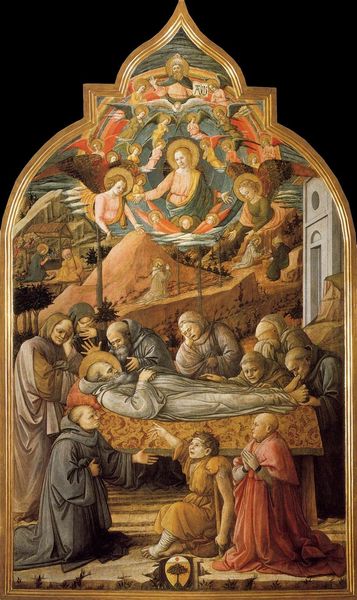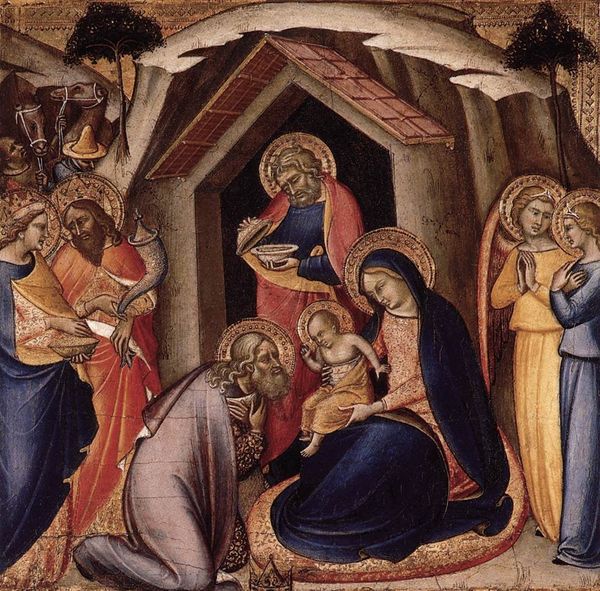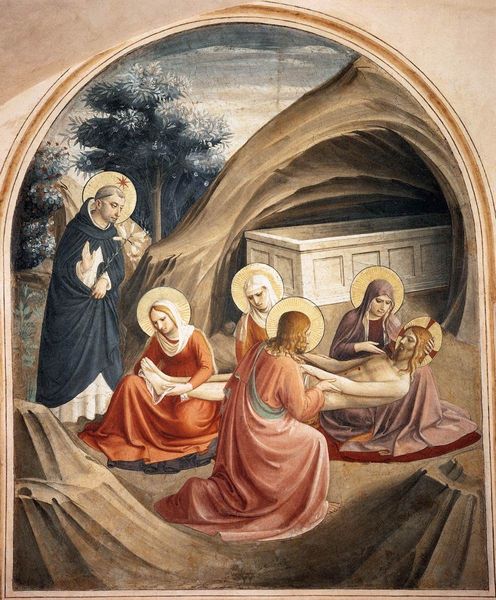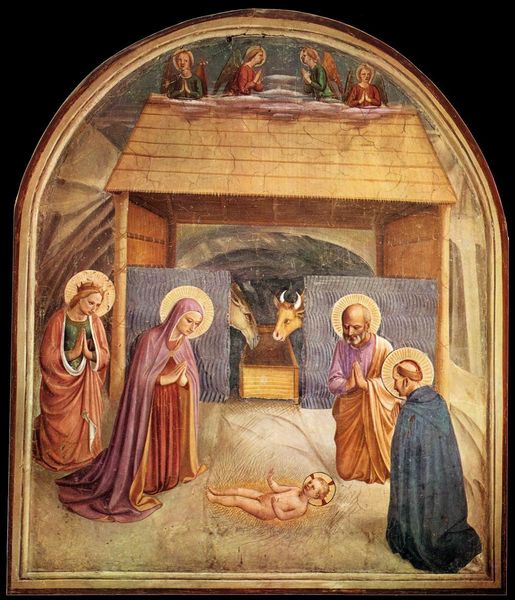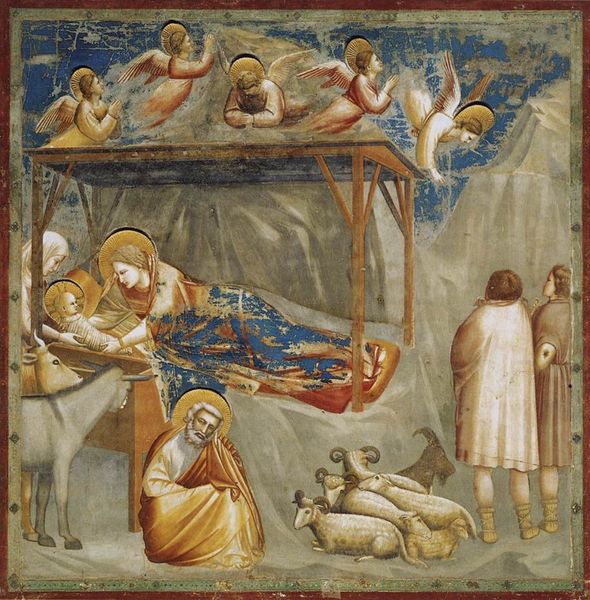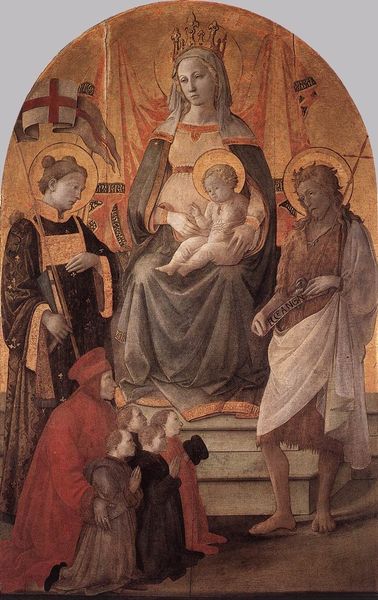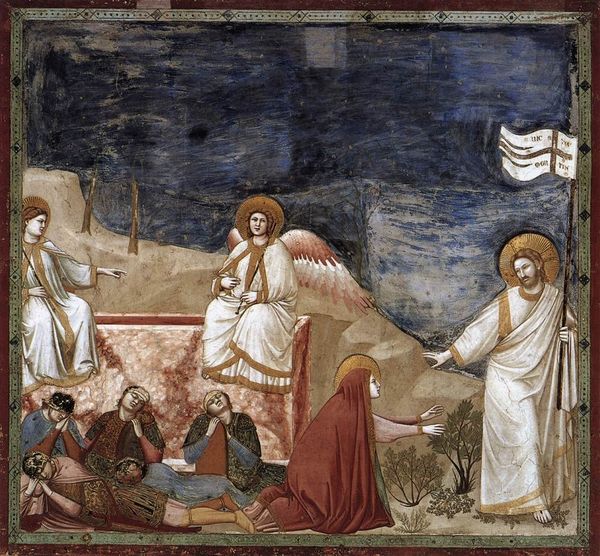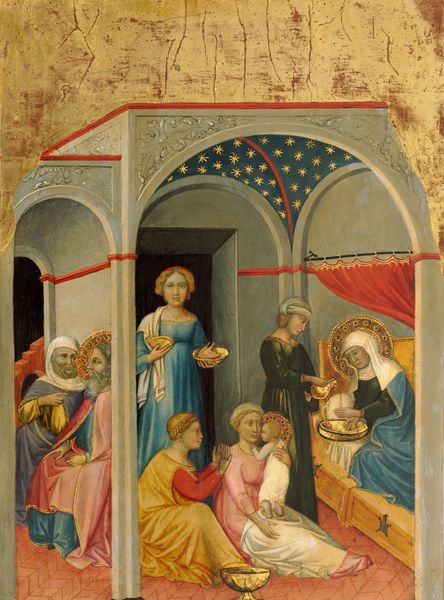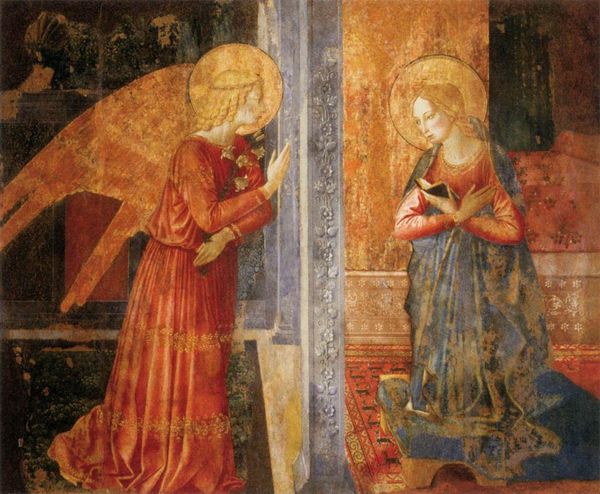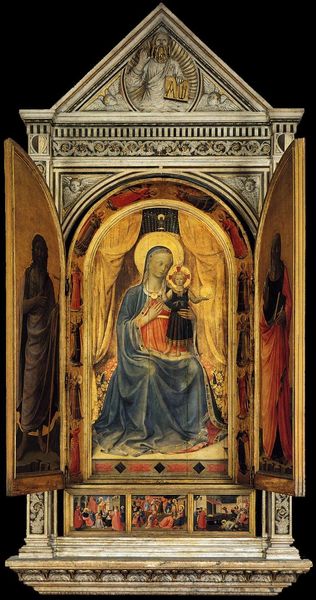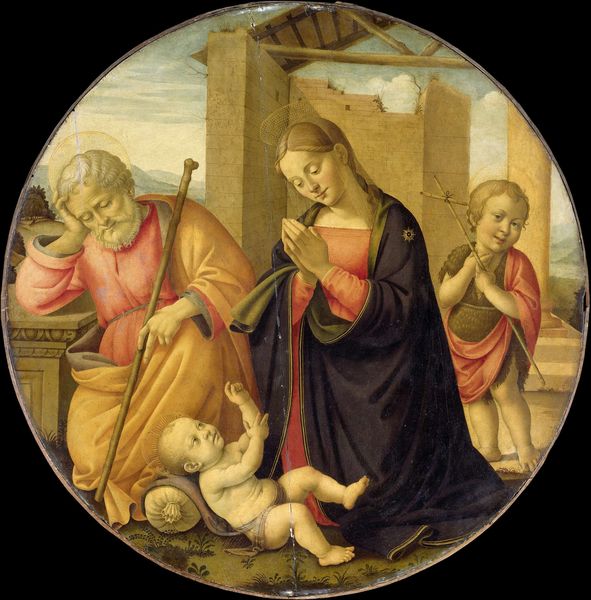
painting, oil-paint
#
narrative-art
#
painting
#
oil-paint
#
figuration
#
oil painting
#
child
#
christianity
#
history-painting
#
italian-renaissance
#
virgin-mary
#
christ
Copyright: Public domain
Editor: This is Domenico Ghirlandaio's "The Nativity," painted in 1492 using oil paint. It's fascinating how the artist combines the earthly scene of the birth with the heavenly choir of angels. What stands out to you when you look at it? Curator: It’s vital to examine this work within its context: late 15th-century Florence. The commissioning patron would have dictated much of the imagery, the materials used, and the level of craftsmanship. Notice the gold leaf—a luxury material—background that signifies divinity, which speaks to a patron willing to invest heavily in devotional imagery and signaling their own wealth. Editor: So, the materials themselves were a status symbol? Curator: Precisely. Consider also the pigments. Were they sourced locally? Imported from afar? Each choice represents economic realities and social aspirations. Furthermore, the panel itself - its size and type of wood - indicates workshop practices and material accessibility within Florence's economy. Editor: That makes me think about the labor involved. How many people were involved in its creation, from preparing the panel to applying the final touches? Curator: Exactly. Ghirlandaio ran a large workshop. Assistants would have prepared the panel, ground pigments, and even painted less important areas. Attributing artistic agency solely to Ghirlandaio obscures the collaborative, almost industrial, nature of artistic production at the time. Look closely—can you discern differences in the quality of brushwork that might indicate different hands at work? The use of particular types of brushes, were they locally available? Editor: I hadn't thought about it that way. Seeing it as a product of many hands and resources definitely shifts my perspective. Curator: The material choices and the labor processes involved were as critical as the narrative depicted, reflecting a complex interplay of religious devotion, economic forces, and social structures. What new aspects about art and historical interpretations have you gained? Editor: I’ve gained insight into understanding labor conditions involved and the value of material consumption related to artistic productions.
Comments
No comments
Be the first to comment and join the conversation on the ultimate creative platform.
